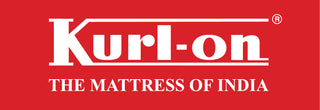We are effectively doing binary classification here because an image either belongs to one class or it doesn’t, it can’t fall somewhere in-between. This is why we imported the np_utils function from Keras, as it contains to_categorical(). This testing set is another set of data your model has never seen before. In terms of Keras, it is a high-level API (application programming interface) that can use TensorFlow’s functions underneath (as well as other ML libraries like Theano). Keras was designed with user-friendliness and modularity as its guiding principles. Fill out the form below to reach out and discover the many benefits of the Meltwater image recognition feature for your social media monitoring.
Ximilar, same as Apple Vision SDK or Google Tensorflow, make the training of custom recognition models easy and affordable. However, not many people and companies have been using this technology to its full potential so far. How can a computer, smartphone or surveillance camera identify objects in the pictures or recognize people in the crowd? What technologies are used to create smart solutions that can imitate human brain functions?
Clarifai: Data, Data, Data
It will introduce you to exciting and intriguing image processing techniques while guiding you on building a system that can detect bar codes from an image. For example, if Pepsico inputs photos of their cooler doors and shelves full of product, an image recognition system would be able to identify every bottle or case of Pepsi that it recognizes. This then allows the machine to learn more specifics about that object using deep learning. So it can learn and recognize that a given box contains 12 cherry-flavored Pepsis.
The pooling operation involves sliding a two-dimensional filter over each channel of the feature map and summarising the features lying within the region covered by the filter. Here is an example of an image in our test set that has been convoluted with four different filters and hence we get four different images. Below is an example of how convolution operation is done on an image.
Build Intelligent Solutions with Us!
Image recognition refers to the task of inputting an image into a neural network and having it output some kind of label for that image. The label that the network outputs will correspond to a pre-defined class. There can be multiple classes that the image can be labeled as, or just one. If there is a single class, the term “recognition” is often applied, whereas a multi-class recognition task is often called “classification”. Overall, stable diffusion AI is an effective and efficient AI technique for image recognition.
- We’ll continue noticing how more and more industries and organizations implement image recognition and other computer vision tasks to optimize operations and offer more value to their customers.
- Here we have used pyplot module from matplotlib library to view our training dataset.
- Today people make fake accounts for online scams, the damaging reputation of famous people, or spreading fake news.
- Another popular application is the inspection during the packing of various parts where the machine performs the check to assess whether each part is present.
- It took almost 500 million years of human evolution to reach this level of perfection.
- Ideally, your system should be able to recognize the product (e.g. a pack of chips) from the top, bottom, front, back, and various angles.
Then a processed image is attributed to a particular catalog, from which it can be retrieved and shown to a customer who has searched for a similar item. Accurate recognition of clothes is an integral part of the visual search in the fashion industry. Basically, AI algorithms are specifically adjusted to detect clothing only. To simplify the process of online search, companies like Google invest in developing AI-powered solutions such as image search. It uses image recognition algorithms to analyze a picture and find similar products for sale.
Use Multiple Recognition Tasks With Fewer Categories
The below image displays the Roadmap of image recognition in detail. The data fed to the recognition system is basically the location and intensity of various pixels in the image. You can train the system to map out the patterns and relations between different images using this information.
Just three years later, Imagenet consisted of more than 3 million images, all carefully labelled and segmented into more than 5,000 categories. This was just the beginning and grew into a huge boost for the entire metadialog.com image & object recognition world. In this example, I am going to use the Xception model that has been pre-trained on Imagenet dataset. Pose estimation finds use in augmented reality, robotics, and even gaming.
Ivy Eye Image Recognition
Today, we are going to talk about the image recognition technology and sophisticated programming innovations it is based on. Typically, an image recognition task involves building a neural network (NN) that processes particular pixels in an image. These networks are loaded with as many pre-labeled images as possible to “teach” them to identify similar images. Latest AI and machine learning advancements have led to computer vision concepts, which describe the ability to process and classify objects based on pre-trained algorithms.
- The Computer Vision model automated two steps of the verification process.
- Today, deep learning algorithms and convolutional neural networks (convnets) are used for these types of applications.
- Thanks to the super-charged AI, the effectiveness of the tags implementation can keep getting higher, while automated product tagging per se has the power to minimize human effort and reduce error rates.
- The image we pass to the model (in this case, aeroplane.jpg) is stored in a variable called imgp.
- Finally, we load the test data (images) and go through the pre-processing step here as well.
- Remember that it is good to play around with the analysis and see how adjusting it changes the results, as this will help you begin to make estimates on your needs for future projects.
In the worst case, imagine a model which exactly memorizes all the training data it sees. If we were to use the same data for testing it, the model would perform perfectly by just looking up the correct solution in its memory. But it would have no idea what to do with inputs which it hasn’t seen before. We’re defining a general mathematical model of how to get from input image to output label. The model’s concrete output for a specific image then depends not only on the image itself, but also on the model’s internal parameters. These parameters are not provided by us, instead they are learned by the computer.
Deep neural networks: the “how” behind image recognition and other computer vision techniques
Great Learning also offers personalized career coaching and interview preparation to help you ace the recruiting process. By enabling faster and more accurate product identification, image recognition quickly identifies the product and retrieves relevant information such as pricing or availability. Ardila et al., ‘End-to-end lung cancer screening with three-dimensional deep learning on low-dose chest computed tomography’, Nature Magazine (2019), 25, pp. 954–961. You were able to recognize the image right away as an airplane, right? Refer to this article to compare the most popular frameworks of deep learning. Every iteration of simulations or tests provides engineers with new learning on how to best refine their design, based on complex goals and constraints.
- Because the sample set of data you should be using is not very large we are going to train it with a small number of Epocs.
- The model will first take all the pixels of the picture and apply a first filter or layer called a convolutional layer.
- Automated adult image content moderation trained on state of the art image recognition technology.
- I’m describing what I’ve been playing around with, and if it’s somewhat interesting or helpful to you, that’s great!
- Rectified Linear Units (ReLu) are seen as the best fit for image recognition tasks.
- Businesses are using logo detection to calculate ROI from sponsoring sports events or to define whether their logo was misused.
The output of sparse_softmax_cross_entropy_with_logits() is the loss value for each input image. How can we get computers to do visual tasks when we don’t even know how we are doing it ourselves? Instead of trying to come up with detailed step by step instructions of how to interpret images and translating that into a computer program, we’re letting the computer figure it out itself. But it is business that is unlocking the true potential of image processing. According to Statista, Facebook and Instagram users alone add over 300,000 images to these platforms each minute. In today’s world, where data can be a business’s most valuable asset, the information in images cannot be ignored.
Why Use Chooch for Object Recognition?
The biggest consideration when training a model is the amount of time the model takes to train. You can specify the length of training for a network by specifying the number of epochs to train over. The longer you train a model, the greater its performance will improve, but too many training epochs and you risk overfitting. Because it has to make decisions about the most relevant parts of the image, the hope is that the network will learn only the parts of the image that truly represent the object in question. This helps prevent overfitting, where the network learns aspects of the training case too well and fails to generalize to new data.
How to create AI image generator?
- Open Picsart photo editor. In the photo editor find the AI Image Generator tool and enter your text prompt.
- Generate AI image. Click the Generate image button to begin the AI image creation process.
- Customize image. Customize your image any way you see fit.
- Download design.
How is AI trained to do facial recognition?
Face detection software detects faces by identifying facial features in a photo or video using machine learning algorithms. It first looks for an eye, and from there it identifies other facial features. It then compares these features to training data to confirm it has detected a face.


